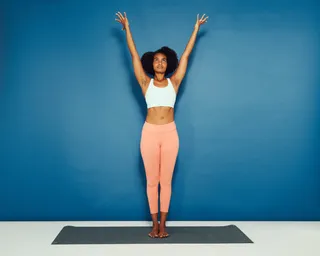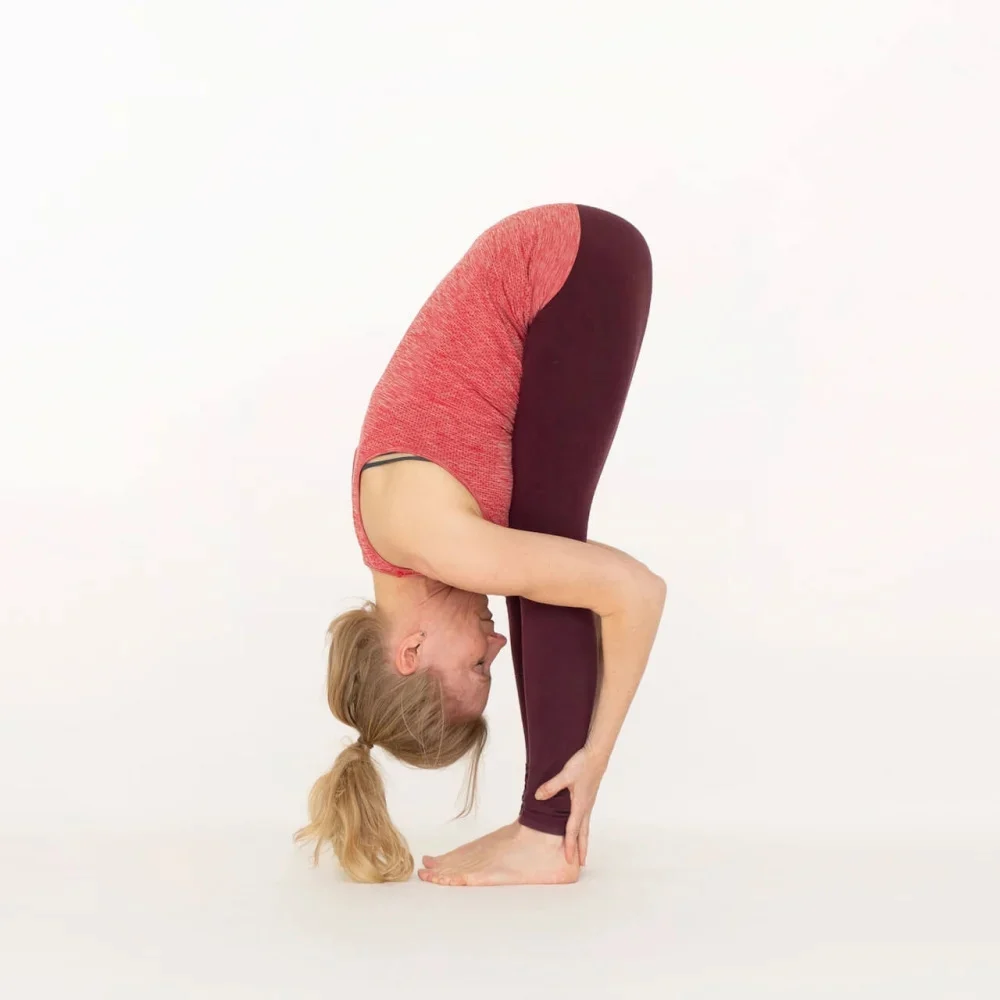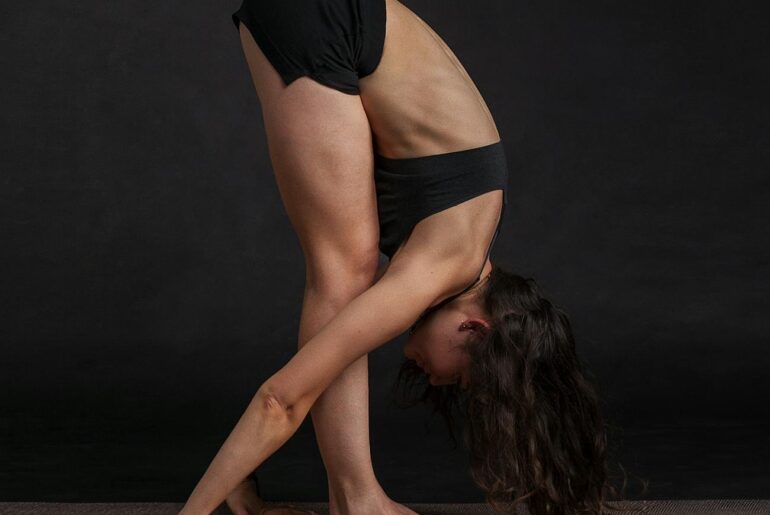Seeking a quick and effective way to incorporate yoga into your daily routine? What if you could reap the benefits of a yoga session in just seven minutes? Discover the power of the seven-minute yoga practice – a perfect solution for busy schedules. Energize your body, calm your mind, and enhance flexibility with this time-efficient yet impactful routine.
Key Takeaways
- Consistency is Key: Dedicating just seven minutes daily to practicing yoga to experience its benefits gradually.
- Start with the Basics: To build a strong yoga practice, begin with foundational poses like Downward Dog and Child’s Pose.
- Focus on Core and Strength: Incorporate poses like Plank and Warrior II to enhance core strength and overall body stability.
- Improve Flexibility and Balance: Include poses such as Tree Pose and Forward Fold to work on flexibility and balance while inhaling and exhaling, focusing on your hands.
- Find Energy and Reduce Stress: Practice poses like Cat-Cow and Corpse Pose to boost energy levels and alleviate stress.
- Modify for Older Adults: To accommodate older practitioners, make adjustments like using props or opting for gentler variations of poses.
- Create Your Routine: Personalize your seven-minute yoga routine by combining poses that resonate most with you for a tailored practice experience.
Seven-Minute Yoga Basics
Quick Routine Overview
The seven-minute yoga routine is a condensed yet effective workout designed for those with busy schedules. It incorporates a series of quick exercises promoting flexibility, strength, and relaxation. This routine is ideal for individuals seeking a time-efficient way to stay active and improve overall fitness.
Targeted Body Areas
The seven-minute yoga routine targets various body areas such as the core, legs, arms, and back through specific poses like downward dog, warrior pose, and child’s pose. Each pose focuses on stretching and strengthening different muscle groups, enhancing overall body awareness and alignment. By engaging these specific areas, practitioners can achieve a well-rounded practice that benefits both physical and mental well-being.
- Core: Engaged in poses like boat pose to strengthen abdominal muscles.
- Legs: Stretched in poses like forward fold to improve flexibility and circulation.
- Arms: Strengthened in poses like plank to enhance upper body strength.
Benefits for Busy Schedules
For individuals with hectic lifestyles, the seven-minute yoga routine offers a range of advantages. Its short duration makes it easily accessible for those with limited time, fitting seamlessly into packed daily schedules. The convenience of this quick routine allows busy individuals to prioritize self-care and maintain a consistent exercise regimen despite their demanding commitments.
Essential Yoga Poses
Standing Tall Breath

The Standing Tall Breath pose involves standing with feet hip-width apart, inhaling deeply while raising arms overhead, and exhaling while lowering the arms. This pose improves posture by elongating the spine and enhances breathing capacity as you inhale.
Proper alignment is crucial in Standing Tall Breath to prevent strain on the back and shoulders. By practicing this pose regularly, individuals can experience improved posture and increased lung capacity.
Forward Fold Pose

To perform the Forward Fold Pose, stand with feet hip-width apart, hinge at the hips, and slowly lower the torso towards the thighs. This pose stretches the hamstrings, releases tension in the back, and promotes relaxation.
Listening to the body’s signals is essential during Forward Fold Pose to avoid overstretching and causing injury. Regular practice of this pose can help increase flexibility and relieve stress in the body.
Chair Strength Pose

The Chair Strength Pose involves sitting back as if sitting on an invisible chair, engaging core muscles, and keeping knees aligned over ankles. Variations include adding arm movements or holding weights to increase intensity.
This pose strengthens muscles in the legs, core, and back while improving balance and stability. Maintaining proper posture and alignment during Chair Strength Pose is key to maximizing its benefits.
Warrior Poses

Warrior Two Guide
- Stand with legs wide apart.
- Extend arms out parallel to the floor.
- Bend front knee at a 90-degree angle.
- Look over front hand. Warrior Two builds strength in legs and core while enhancing focus and stability.
Reverse Benefits
- Reversing daily postural habits.
- Engaging core muscles for stability.
Core and Strength Focus
Plank Core Strength
Plank Core Strength is a fundamental yoga pose that targets the core muscles. Variations include side planks and forearm planks. This pose enhances core stability, grounding you during practice. Benefits include improved posture, balance, and overall strength.
Maintain proper form by aligning your wrists under shoulders and engaging core muscles. Keep your body in a straight line from head to heels. To deepen the pose, lift one leg or arm at a time while holding the plank position.
Ab Crunch Technique
Mastering the Ab Crunch technique involves lying on your back, knees bent, hands behind your head for support. Lift your upper body towards your knees using abdominal muscles. Strengthening these muscles helps with posture and prevents lower back pain.
Controlled movements are crucial to prevent strain. Avoid pulling on your neck and focus on engaging the abs to lift your torso. Remember to exhale as you crunch up and inhale as you lower back down.
Squat Benefits
Squats are excellent for strengthening lower body muscles like quadriceps, hamstrings, and glutes. They also improve mobility and flexibility in the hips and lower back. Maintain proper form by keeping feet hip-width apart, chest lifted, and knees tracking over toes.
Flexibility and Balance
Triangle Pose Tips
To properly execute the Triangle Pose, ensure your hips are square and legs straight. Stretch your arms in opposite directions. This pose enhances flexibility by targeting the ankles and legs. Deep breathing aids in maintaining balance and focus during the pose.
Engage your core while extending your torso to experience the full benefits of stretching and opening the body. The pose helps in improving movement range by working on the elbows, heels, and ankles. Focus on aligning your left foot with the edge of the mat for stability.
Cactus Chest Expansion
In the Cactus Chest Expansion pose, open your chest wide while bending your elbows at 90 degrees. Variations include lifting the heels or adding a twist for more challenge. This pose is beneficial for posture improvement by engaging back muscles effectively.
Opening up the chest area releases tension and allows for better breathing capacity. By practicing this pose regularly, you can strengthen not only your back but also enhance shoulder mobility. Remember to maintain a steady breath flow to support your body throughout the practice.
Energy and Stress Relief
Energy Boosting Routine
Engage in a dynamic yoga routine to rejuvenate your energy levels swiftly. Incorporate poses like Sun Salutations to invigorate the body. Through consistent practice, experience increased vitality and alertness. Focus on deep breathing techniques to enhance oxygen flow and boost overall energy.
Stress Relief Sequence
Practice the Stress Relief Sequence for a calm and relaxed mind. Each pose within this sequence aids in releasing tension and promoting relaxation. Poses like Child’s Pose and Corpse Pose help in alleviating stress. Embrace the soothing effects of this sequence to unwind after a long day.
Modifications for Older Adults
Safe Practice Tips
Yoga for older adults requires careful attention to safety. Listen to your body’s signals to prevent injuries. Begin with gentle movements and progress gradually to avoid strain. Remember to breathe deeply throughout the practice for relaxation.
Proper warm-up exercises are essential before starting yoga poses. Cooling down after the session helps in reducing muscle soreness. Avoid pushing yourself too hard and respect your body’s limits during each pose. If you feel any discomfort, ease off or modify the posture accordingly.
Comfortable Modifications
Modifying yoga poses can make the practice more accessible for all ages and fitness levels. Use props like blocks or straps to support your body in challenging poses. Adjust the intensity of each posture based on your comfort level to prevent strain or injury.
Honoring your body’s limitations is crucial when practicing yoga as an older adult. Make modifications that suit your individual needs without compromising safety. Focus on alignment and proper form rather than trying to achieve advanced poses beyond your capability.
Building Your Own Routine
Customization Tips
Creating a personalized seven-minute yoga routine involves tailoring it to your preferences and needs. To customize effectively, focus on selecting poses that resonate with your body and mind. By adapting the routine to your specific goals, you can enhance its effectiveness and enjoy the practice more.
Consider incorporating poses that address any particular areas of concern or tightness in your body. For instance, if you’re looking to improve flexibility, include stretches that target those muscle groups. By personalizing your routine, you can make it more engaging and beneficial for your overall well-being.
Routine Creation Guide
To craft your own seven-minute yoga routine, start by choosing poses that cater to your objectives. Begin with gentle warm-up poses to prepare your body for deeper stretches. Next, gradually integrate more challenging asanas based on your comfort level and experience.
When structuring the sequence of poses, ensure a smooth flow between each movement. Consider including a mix of standing, seated, and balancing poses to work different muscle groups comprehensively. By aligning the routine with your goals, you can create a practice that is both fulfilling and effective in achieving desired outcomes.
Final Remarks
Incorporating seven-minute yoga routines into your daily schedule can significantly enhance your overall well-being. From boosting your core strength and flexibility to relieving stress and increasing energy levels, these quick sessions offer a myriad of benefits. By customizing poses and sequences to suit your needs, you can create a tailored practice that aligns with your fitness goals and lifestyle.
Take the first step today by implementing a brief yoga routine into your daily regimen. Start small, focusing on a few key poses and gradually expanding your practice as you grow more comfortable. With dedication and consistency, you’ll soon experience the transformative effects of incorporating yoga into your routine. Embrace this opportunity to prioritize your health and wellness, one seven-minute session at a time.
Frequently Asked Questions
Is seven-minute yoga effective for beginners?
Yes, seven-minute yoga can be effective for beginners as it provides a quick routine to start building strength, flexibility, and mindfulness. It’s a great way to introduce yoga into your daily routine without feeling overwhelmed.
How can I incorporate the core and strength focus in my seven-minute yoga practice?
To incorporate core and strength focus in your seven-minute yoga practice, include poses like plank, boat pose, and warrior poses. These poses engage your core muscles and help build overall strength while improving stability and balance.
Can older adults benefit from practicing seven-minute yoga?
Yes, older adults can benefit from practicing seven-minute yoga by improving flexibility, mobility, and reducing stiffness. Modifications like using props for support and focusing on gentle movements can make the practice safe and beneficial for seniors.
What are the essential yoga poses I should include in my seven-minute routine?
Include essential yoga poses like downward dog, mountain pose, child’s pose, and cobra pose in your seven-minute routine. These poses help stretch major muscle groups, improve posture, and promote relaxation within a short duration.
How does seven-minute yoga help with stress relief and boosting energy levels?
Seven-minute yoga helps with stress relief by incorporating breathing techniques that calm the mind and body. The practice also boosts energy levels by increasing blood flow, releasing tension, and promoting a sense of rejuvenation within a short timeframe.











